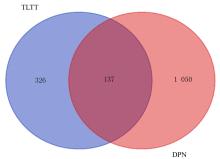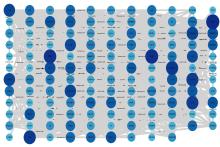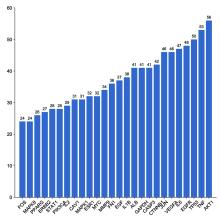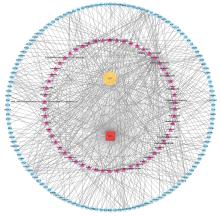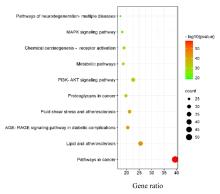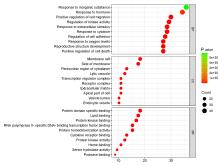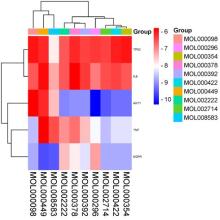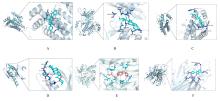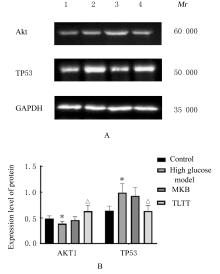| 1 |
TESFAYE S, BOULTON A J, DYCK P J,et al .Diabetic neuropathies:update on definitions,diagnostic criteria,estimation of severity,and treatments[J].Diabetes Care,2010,33(10):2285-2293.
|
| 2 |
SHIN J Y, ROH S G, SHARAF B,et al.Risk of major limb amputation in diabetic foot ulcer and accompanying disease:a meta-analysis[J].J Plast Reconstr Aesthet Surg,2017;70(12):1681-1688.
|
| 3 |
VITKINA TK, NARRES M, CLAESSEN H,et al.Incidence of lower extremity amputation in the diabetic compared to the non-diabetic population:a systematic review protocol[J].Syst Rev,2015,4(1):74.
|
| 4 |
KIM H, KIM J J, YOON Y S.Emerging therapy for diabetic neuropathy:cell therapy targeting vessels and nerves[J].Endocr Metab Immune Disord Drug Targets,2012,12(2):168-178.
|
| 5 |
ZHOU J Y, ZHANG Z, QIAN G S.Mesenchymal stem cells to treat diabetic neuropathy:a long and strenuous way from bench to the clinic[J].Cell Death Discov,2016,2:16055.
|
| 6 |
MAHMOOD D, SINGH B K, AKHTAR M.Diabetic neuropathy: therapies on the horizon.[J].J Pharm Pharmacol,2009,61(9):1137-1145.
|
| 7 |
JAVED S, ALAM U, MALIK R A.Treating diabetic neuropathy:present strategies and emerging solutions[J].Rev Diabet Stud,2015,12(1/2):63-83.
|
| 8 |
MALIK R A.Why are there no good treatments for diabetic neuropathy?[J].Lancet Diabetes Endocrinol,2014,2(8):607-609.
|
| 9 |
QUATTRINI C, TAVAKOLI M, JEZIORSKA M,et al.Surrogate markers of small fiber damage in human diabetic neuropathy[J].Diabetes,2007,56(8):2148-2154.
|
| 10 |
刘志华,孙晓波.网络药理学:中医药现代化的新机遇[J].药学学报,2012,47(6):696-703.
|
| 11 |
RU J L, LI P, WANG J N,et al.TCMSP:a database of systems pharmacology for drug discovery from herbal medicines[J]. J Cheminform,2014,6(1):13.
|
| 12 |
ÇAKICI N, FAKKEL T M, VAN NECK J W,et al.Systematic review of treatments for diabetic peripheral neuropathy[J].Diabet Med,2016,33(11):1466-1476.
|
| 13 |
郭立新.2021年糖尿病领域年度重大进展回顾[J].中华糖尿病杂志,2022,14(1):1-8.
|
| 14 |
GORDOIS A, SCUFFHAM P, SHEARER A,et al.The health care costs of diabetic peripheral neuropathy in the US[J].Diabetes Care,2003,26(6):1790-1795.
|
| 15 |
ANG L, JAISWAL M, MARTIN C,et al.Glucose control and diabetic neuropathy:lessons from recent large clinical trials[J].curr diab rep,2014,14(9):528-7344.
|
| 16 |
DZIEMIDOK P, SZCZESNIAK G, KOSTRZEWA-ZABLOCKA E,et al.Current glycaemic control has no impact on the advancement of diabetic neuropathy[J].Ann Agric Environ Med,2012,19(4):742-745.
|
| 17 |
SMITH A G, RUSSELL J, FELDMAN E L,et al.Lifestyle intervention for pre-diabetic neuropathy[J].Diabetes Care,2006,29(6):1294-1299.
|
| 18 |
WANG Q, GUO Z L, YU Y B,et al.Two-point discrimination predicts pain relief after lower limb nerve decompression for painful diabetic peripheral neuropathy[J].Plast Reconstr Surg,2018,141(3):397e-403e.
|
| 19 |
JAVED S, PETROPOULOS I N, ALAM U,et al.Treatment of painful diabetic neuropathy[J].J Assoc Physicians India,2014,6(1):381-382.
|
| 20 |
赵宏贺,王 丽,于世家.基于网络药理学及分子对接探究木丹颗粒治疗糖尿病周围神经病变分子机制研究[J].中医临床研究,2021,13(25):1-7.
|
| 21 |
邢琪昌,陈 佳,刘 征,等.当归四逆汤治疗糖尿病周围神经病变靶点预测和机制探讨[J].中国中医药信息杂志,2020,27(6):101-105.
|
| 22 |
衡先培.通络糖泰治疗非胰岛素依赖性糖尿病性周围神经病变的临床研究:附:129例病例报告[J].成都中医药大学学报,1999,22(2):11-13.
|
| 23 |
张海生.通络糖泰方对糖尿病周围神经病变大鼠血清C反应蛋白水平及神经功能的影响[D].成都:成都中医药大学,2006.
|
| 24 |
王凡雅.通络糖泰方对实验性糖尿病周围神经病变大鼠神经功能的影响及作用机理的探讨[D].成都:成都中医药大学,2009.
|
| 25 |
段金娜.通络糖泰方对实验性糖尿病周围神经病变大鼠JNK信号转导通路的影响及机制研究[D].成都:成都中医药大学,2015.
|
| 26 |
汪 帅,孙 宇,李春梅,等.豆甾醇的研究进展概述[J].中国药业,2019,28(23):96-98.
|
| 27 |
刘威良,姬 昱,黄艾祥.β-谷甾醇的研究及开发进展[J].农产品加工,2019,1(1):77-79,82.
|
| 28 |
王宝江,张家英,李 丹,等.槲皮素对糖尿病性周围神经病变治疗的实验研究[J].中国医药导报,2008,5(14):18-20.
|
| 29 |
吴巧敏,卢 笑,倪海祥.山奈酚防治2型糖尿病研究进展[J].浙江中西医结合杂志,2017,27(4):344-349.
|
| 30 |
邢 颖,王 雪,何忠梅,等.常春藤皂苷元的研究进展[J].中国实验方剂学杂志,2017,23(22):226-234.
|
| 31 |
OZA M J, KULKARNI Y A.Formononetin ameliorates diabetic neuropathy by increasing expression of SIRT1 and NGF [J]. Chem Biodivers, 2020,17(6): e2000162.
|
| 32 |
杨 宇,胥学冰,蒋殿宇,等.异鼠李素通过调控NF-κB通路发挥镇痛作用[J].第三军医大学学报,2021,43(14):1366-1371.
|
| 33 |
SUBEDI L, LEE J H, GAIRE B,et al.Sulforaphane inhibits MGO-AGE-mediated neuroinflammation by suppressing NF-kB,MAPK, and AGE-RAGE signaling pathways in microglial cells[J].Antioxidants (Basel),2020,9(9):792.
|
 )
)


